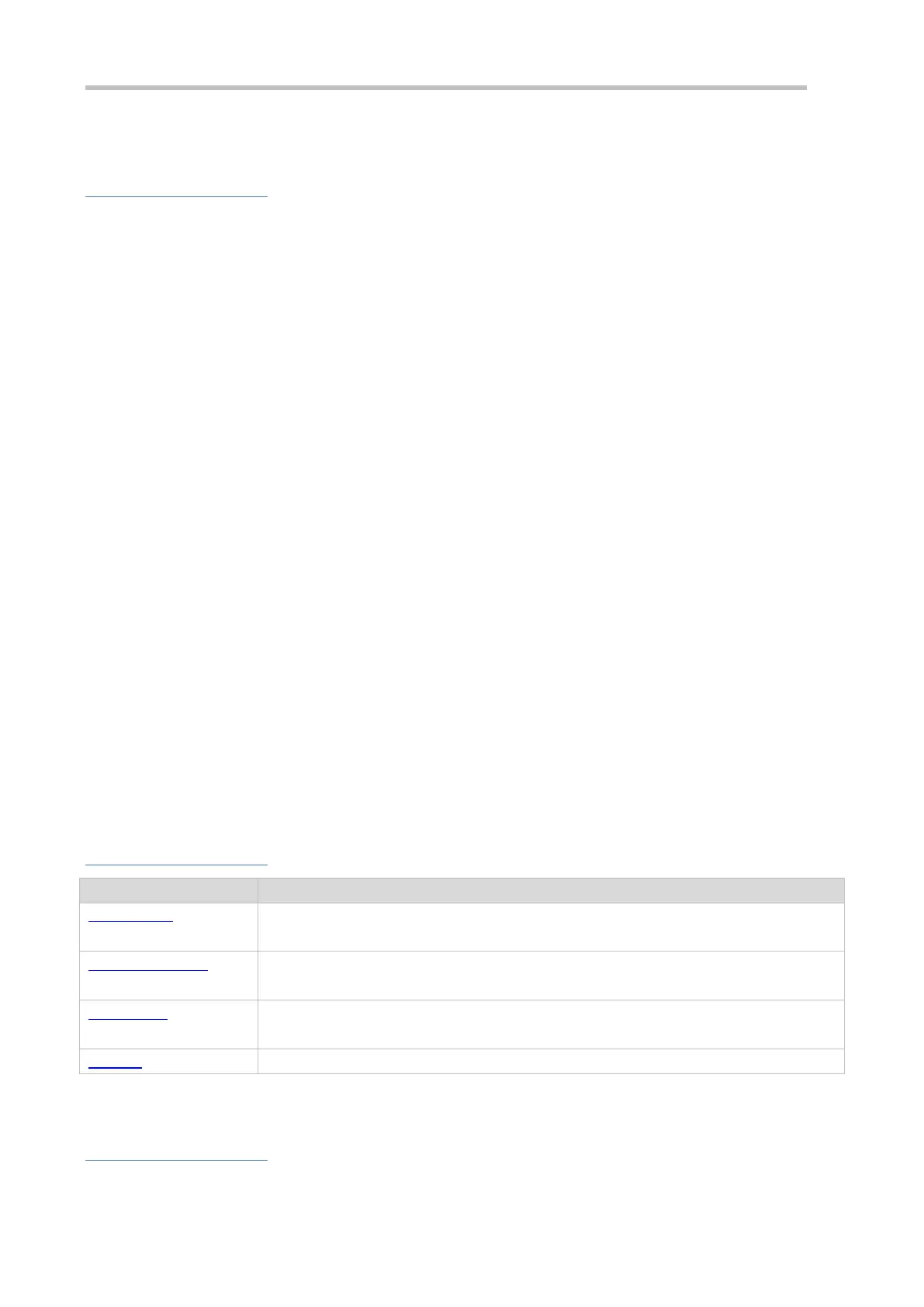Configuration Guide Configuring DHCPConfiguring DHCP
4.3 Features
Basic Concepts
DHCP Server
Based on the RFC 2131, Ruijie DHCP server assigns IP addresses to clients and manages these IP addresses.
DHCP Client
DHCP Client enables a device to automatically obtain an IP address and configurations from a DHCP server.
DHCP Relay
When a DHCP client and a DHCP server are not in a same subnet, they need a DHCP relay to forward DHCP request and
reply packets.
Lease
Lease is a period of time specified by a DHCP server for a client to use an assigned IP address. An IP address is active
when leased to a client. Before a lease expires, a client needs to renew the lease through a server. When a lease expires
or is deleted from a server, the lease becomes inactive.
Excluded Address
An excluded address is a specified IP address not assigned to a client by a DHCP server.
Address Pool
An address pool is a collection of IP addresses that a DHCP server may assign to clients.
Option Type
An option type is a parameter specified by a DHCP server when it provides lease service to a DHCP client. For example, a
public option include the IP addresses of a default gateway (router), WINS server and a DNS server. DHCP server allows
configuration of other options. Though most options are defined in the RFC 2132, you can add user-defined options.
Overview
Enable DHCP Server on a device, and it may assign IP addresses dynamically and pushes
configurations to DHCP clients.
Enable DHCP Relay on a device, and it may forward DHCP request and reply packets
across different network segments.
Enable DHCP Client on a device, and it may obtain IP addresses and configurations
automatically from a DHCP server.
Plan IP range requested by DHCP clients from different vlan+port/vlan
4.3.1 DHCP Server
Working Principle
DHCP Working Principle

